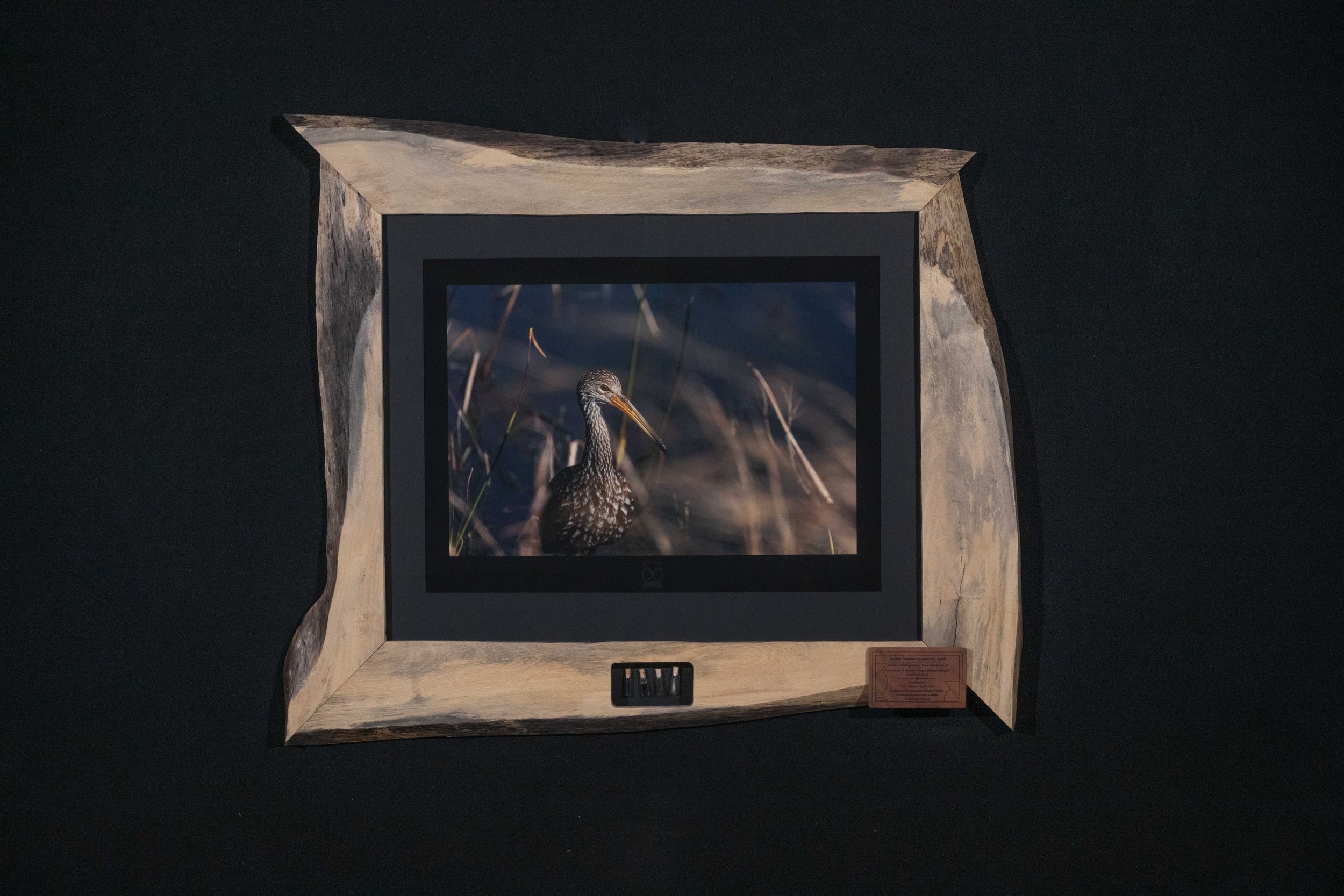Limpkin - Winding Waters, West Palm Beach, FL




Limpkin - Winding Waters, West Palm Beach, FL
Limpkin (Aramus guarauna), Adult
The Limpkin has always been a rare sight for me. I went nearly 20 years between sightings before I recently found a new wildlife area, Winding Waters Wetlands. Now I see Limpkin whenever I want to as one per trip to the wetlands is a given. They are rather large wading birds and have a distinctive call as well. This photo was taken 2/9/23 at 9:43 am.
WeForest Donation: $320 (What is this?)
Print Number: 1/3
Print Size: 15 x 22.5
Total Dimensions: 35 x 41
Hanging equipment and certificate of authenticity included.
PHOTOGRAPH
Limpkin (Aramus guarauna)
Although the Limpkin looks like a large cross between a Juvenile Night Heron and an Ibis, it is actually in a family all to its own, and is much more closely related to cranes than its other wading counterparts. Named for there gangly walking style as they hunt, the Limpkin is a rather large wading bird that stands out amongst the crowd. They primarily eat apple snails, their long curved bill designed perfectly for capturing the little meals. They travel far and wide for them as well, their territory stretching from the southernmost parts of South America, all through South and Central America to their northernmost range in Florida.
Location
Winding Waters
One of my more recent finds, Winding Waters is a magical area where I consistently see animals that I rarely see in other wildlife refuges and nature areas that I visit in Florida. I am always guaranteed to see a Limpkin, a bird I went always 20 years without seeing until finding Winding Waters. Kites and Eagles flourish here too and a couple dozen other species are found in a single walk through the preserve. It is located between Palm Beach Gardens and West Palm Beach, FL, and actually sits on the backside of one of the well known Florida “mountains.” Yes that would be a dump. However, it is far more breathtaking and enjoyable than that might lead one to believe. It also might be a reason that fewer people go to this nature area than many others and thus why there is so much unique life existing there.
FRAME
Woman’s Tongue (Albizia lebbeck)
Albizia Lebbeck, as it is scientifically known, is native to the Indian subcontinent and Myanmar. It is commonly grown in Australia and other tropic and subtropic places. I get my supply of Woman’s Tongue from Key West, Florida where it is invasive. A wood salvager who has removed the trees from construction sites and properly mills and drys the wood rather than sending it to the dump is my source for a lot of my wood.
THE ELEMENTS
Fire, Water, Earth, and Air
In the display case in the bottom of the frame, four items are preserved glass vials. The items represent the elements: fire (wood charcoal), water (mineral oil), earth (soil), and air (a milkweed seed). I include these items in my work as a symbol of the interconnectedness of all life on earth, and as a reminder that humans must do better.
The Plaque
I engrave a wooden information plaque for each work. The plaque includes what the photograph is of, the location of the photograph, what type of wood the frame is made of and where I got the wood from. The plaques also explain what the vials are in each display case, and even state the meaning of my logo. The plaques are attached magnetically and can be removed to read or to store on the back of each frame if you prefer not to have it displayed on the front.

